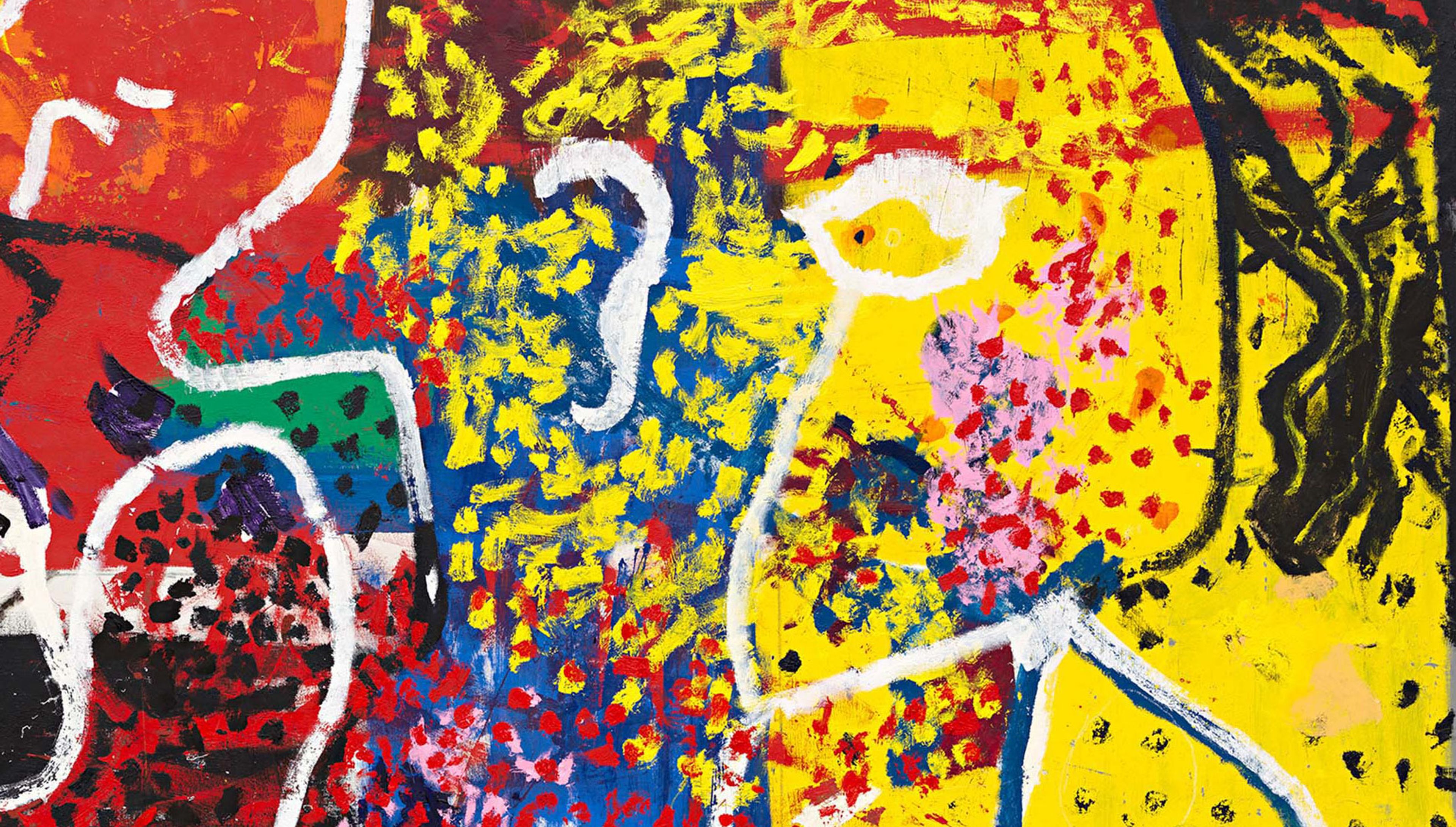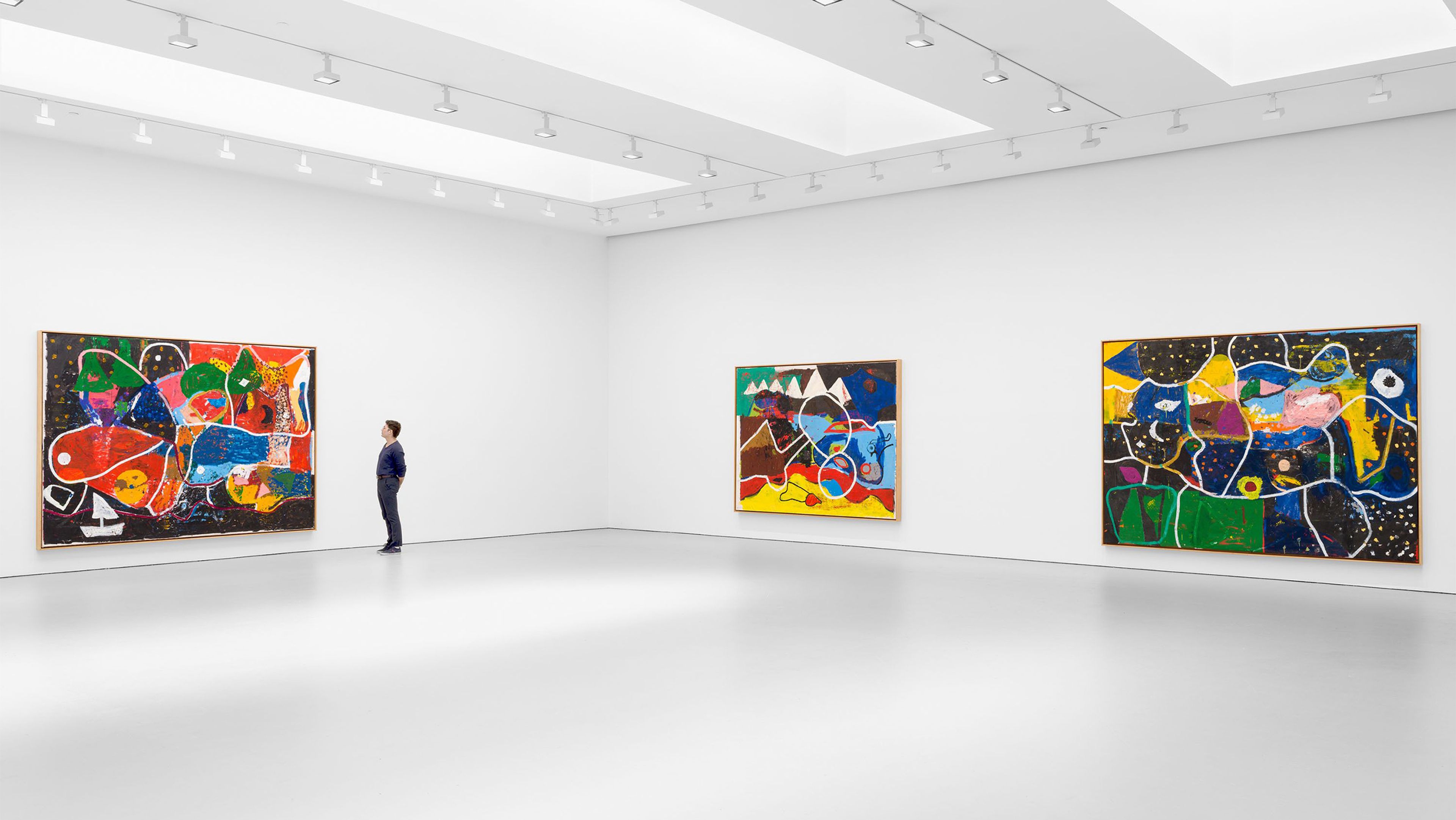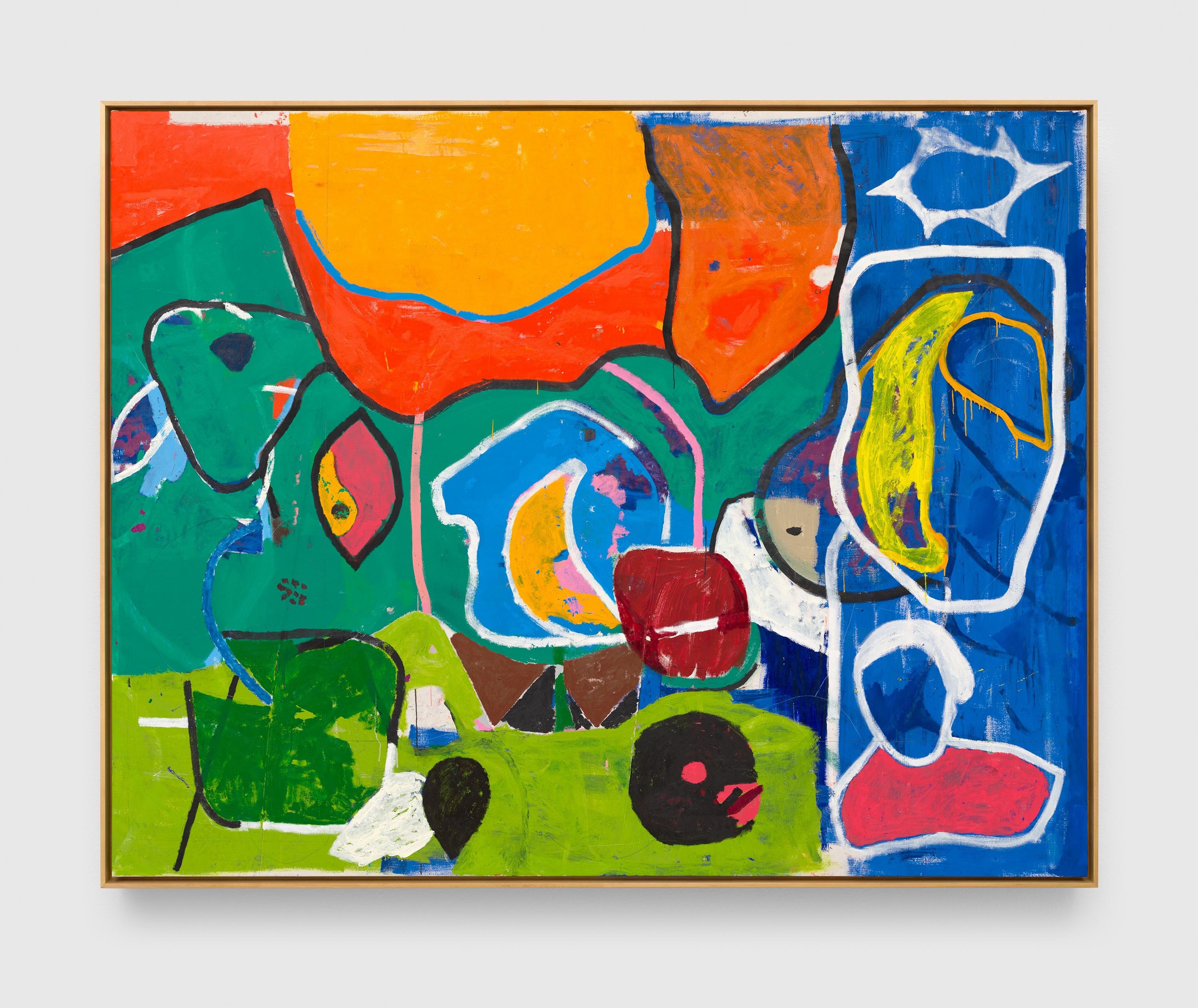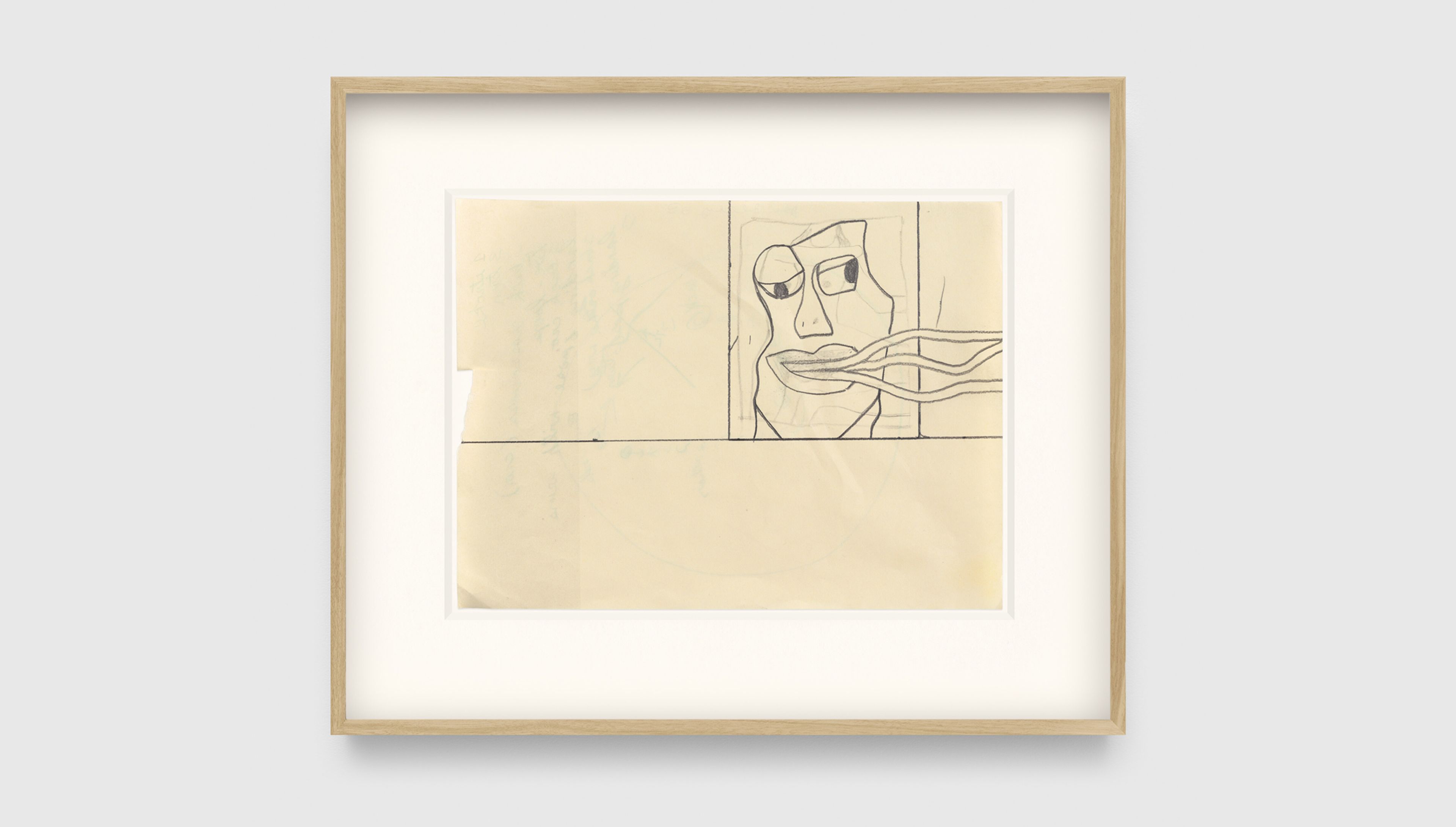Exhibition
Joe Bradley: Vom Abend
Want to know more?
Past
April 11—May 18, 2024
Opening Reception
Thursday, April 11, 6—8 PM
Location
New York: 19th Street
533 West 19th Street
New York, New York 10011
Artist

Image: Joe Bradley, Occident, 2023-2024 (detail)
Explore
“Abstract painting doesn’t feel totally on the nose with these anymore. There are nods and references to the world around us, and to forms and nature, and animals and plants. Those sorts of things are really starting to come to the surface.”
—Joe Bradley, March 2024

Joe Bradley, Flat Earth, 2023-2024 (detail)
“He covers most of the canvas, working with a narrower brush, which eliminates big gestures and pulls you close to the surface. The colors are of equal heat; white lines course through them, creating shapes, separating areas into broad patchworks that include mountain-like profiles or suggestions of flat fields.… There's a marked disinterest in closing anything off; glimpses of what's beneath are actively present.”
—Roberta Smith, co-chief art critic, The New York Times

Installation view, Joe Bradley: Vom Abend, David Zwirner, New York, 2024

Joe Bradley, Together, 2023-2024 (detail)
Specific colors from Bradley’s lively palette of reds, blues, greens, yellows, and oranges are applied in large swaths of paint in some works and in others they are used like accents or interjections that create strong visual contrasts.
“Throughout his different bodies of work, Bradley has maintained a consistent palette, a surprising line of connection between the diverse groups.… The idea that color could stand for itself—or be accepted as such—without having to serve a specific representation was important for him.… Like the commercially colored vinyl, the cadmium family of pigments served as a sort of readymade register of colors.”
—Kim Conaty, chief curator, The Whitney Museum of American Art, New York

Joe Bradley, Kalparush, 2023-2024 (detail)
Densely applied passages of speckled paint and daubs of oil provide texture and color modulation in certain areas of individual paintings, while in others the dots are larger and more sparingly applied, appearing like celestial expanses or evening skyscapes.

Installation view, Joe Bradley: Vom Abend, David Zwirner, New York, 2024
“A Joe Bradley painting is many things, but it is not for the dainty of heart. When you walk amongst his canvases you walk through a kind of dream jungle where the meaty atmosphere is mottled and streaked with sinuous filaments that may or may not cohere into something you think you recognize.”
—Charles Schultz, managing editor, The Brooklyn Rail

Installation view, Joe Bradley: Vom Abend, David Zwirner, New York, 2024
“The genius of Joe Bradley's drawings is their utter indifference to categories.… They are instead hazy, shambling vibes that come over you like a lyric, a blurt, or a melody.… It sounds absurd, actually, but Bradley's scrawl taps into a collective consciousness, and does so with minimal fuss.”
—Dan Nadel, curator-at-large, Lucas Museum of Narrative Art, Los Angeles

Joe Bradley, Salute, 2023-2024 (detail)

Alexander Calder, Circle with Eyes, 1976. © 2024 Calder Foundation, New York / Artists Rights Society (ARS), New York

Joan Miró, Blue II, 1961
Cosmic abstractions that look like moons or suns mix with eye-like shapes that recall the works of Alexander Calder or Joan Miró, and yet any figurative or stylistic references appear as part of an overall collaging of form, color, and facture without any one feature dominating.

Philip Guston, In the Studio, 1975. © The Estate of Philip Guston, Licensed by SCALA / Art Resource, New York

Georg Baselitz, The Gleaner (Die Ährenleserin), 1978. Collection of the Solomon R. Guggenheim Museum, New York. © George Baselitz

A.R. Penck, Will Sign Become Reality? I, 1982
“He has been compared to greats from Philip Guston to Ellsworth Kelly, Robert Rauschenberg to the Chicago ‘Hairy Who’ artists.… I'll take the liberty of adding … some of the major figures of European expressive painting, starting with late Picasso … not to mention German artists Georg Baselitz and A. R. Penck.”
—Sir Norman Rosenthal, curator and art historian

Joe Bradley, Easy Death, 2023-2024 (detail)
“I was listening to a lecture by Paul Schrader who wrote Taxi Driver, and one of his bumper stickers was: ‘Make a rule. Break a rule.’ And I totally relate to that.… You establish a set of rules as a framework to work within and then when you deviate from those, and you make these little transgressions, that’s the spark where things happen.”
—Joe Bradley, March 2024

Installation view, Joe Bradley: Vom Abend, David Zwirner, New York, 2024
Inquire About Works by Joe Bradley















